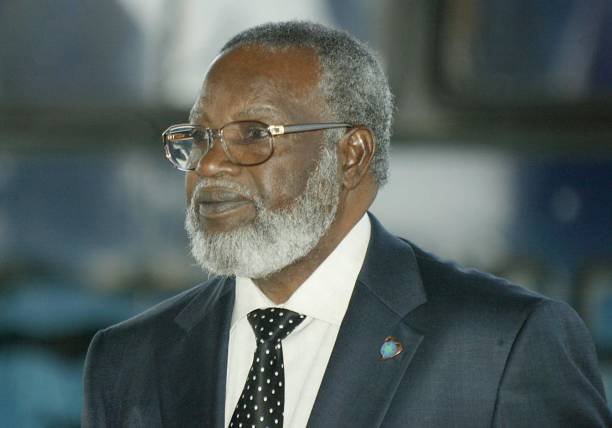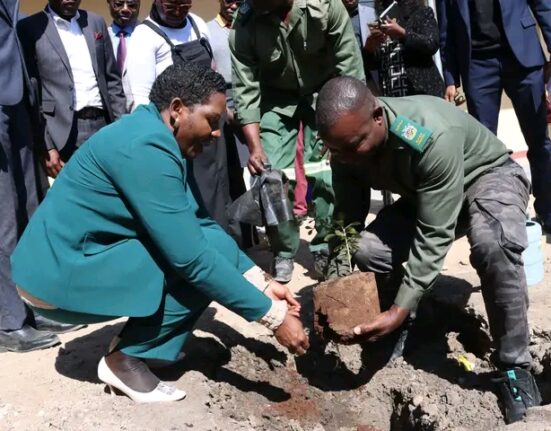Namibia’s transition from a nation deeply scarred by colonialism and apartheid to a peaceful, democratic state is one of the most remarkable stories in modern African history. At the heart of this transformation lies the process of national reconciliation – a concept that has shaped the country’s social, political, and cultural fabric since its independence in 1990. The journey toward reconciliation was not an easy one, and it required extraordinary efforts from both the government and the people of Namibia. Forgiving the past, confronting painful memories, and building a unified future were pivotal challenges the country had to navigate. This article will explore Namibia’s path toward reconciliation, the steps taken to heal the wounds of the past, and the importance of this ongoing process for the nation’s future.
The Shadow of the Past: Namibia’s Struggle for Independence
Namibia’s history of colonial rule and apartheid left deep scars on its society. Under German colonial rule (1884-1915), the indigenous peoples of Namibia were subjected to violence, forced labor, and dispossession of land. The Herero and Nama genocide (1904-1908), one of the first genocides of the 20th century, remains a particularly painful chapter in Namibia’s history. Over 80,000 Herero and Nama people were killed or forced into the desert to perish from starvation and thirst as the German colonial army sought to quell resistance to their rule.
After World War I, Namibia became a mandate of South Africa under the League of Nations, and later, following the establishment of apartheid in 1948, the country was subjected to racially discriminatory policies similar to those in South Africa. During this period, the Namibian black majority was denied basic rights, including voting, access to education, and the ability to own land.
The indigenous people of Namibia, led by movements such as SWAPO (South West Africa People’s Organization), fought for their independence through armed struggle, facing not only the brutal tactics of the apartheid regime but also the harsh challenges of international isolation. SWAPO became the central force for independence, and after years of negotiations, Namibia finally gained its independence on March 21, 1990.
While independence was celebrated as a hard-won victory, it also marked the beginning of a new challenge – that of overcoming the divisions and traumas caused by decades of colonial oppression and apartheid rule.
Forgiving the Past: The Need for National Reconciliation
The realization that Namibia could not move forward while carrying the weight of its painful history led to the creation of the National Reconciliation Process. When Sam Nujoma, SWAPO’s leader and Namibia’s first president, assumed office, one of his primary goals was to unite a country that had been divided along racial, ethnic, and political lines.
The goal of national reconciliation was clear: to bring together Namibia’s diverse groups, heal the deep divisions caused by centuries of oppression, and create a sense of unity that would guide the country into a prosperous future. A fundamental aspect of this process was recognizing the injustices that had occurred during the colonial and apartheid eras, acknowledging the pain of the oppressed, and working to heal these wounds without ignoring or excusing the past.
To achieve this, the new government adopted policies of forgiveness, peaceful coexistence, and nation-building. Rather than seeking retribution or revenge, the focus shifted toward the collective effort of building a new democratic nation where everyone, regardless of race or history, had the opportunity to participate.
The Role of the Truth and Reconciliation Commission
One of the most important instruments of national reconciliation in Namibia was the Truth and Reconciliation Commission (TRC), established shortly after independence. Modeled after South Africa’s TRC, the Namibian version sought to provide a platform for victims of human rights violations to share their stories, while also giving perpetrators the opportunity to confess their crimes in exchange for amnesty.
The TRC’s objectives were to:
- Establish the truth about the human rights violations that took place during the colonial and apartheid periods.
- Provide justice for victims through recognition and acknowledgment of their suffering.
- Promote forgiveness by encouraging those who were responsible for these violations to come forward and confess their actions.
- Help promote healing by creating a platform for dialogue and understanding.
The TRC hearings were a powerful symbol of Namibia’s commitment to addressing its past. Survivors of the genocide and other victims of colonial violence were given the opportunity to speak about their experiences, and the country as a whole began to collectively confront the injustices of its past.
Although the TRC’s work was not without controversy and criticism, it played an important role in initiating a national dialogue about forgiveness, accountability, and the need to look forward while acknowledging past wrongs. By acknowledging and documenting Namibia’s painful history, the TRC provided the foundation for reconciliation and healing across the nation.
Economic and Social Reconciliation
While political reconciliation through the TRC and other governmental initiatives was essential, Namibia also faced the monumental task of economic reconciliation. After independence, the economic disparities between the black majority and the white minority were stark. The wealth of the country was still concentrated in the hands of a few, and black Namibians were excluded from key economic sectors and land ownership.
To address these inequalities, the Namibian government pursued policies aimed at:
- Land redistribution: The government initiated land reform programs aimed at returning land to indigenous Namibians. However, progress was slow due to entrenched land ownership patterns and legal hurdles.
- Social welfare: Efforts were made to improve education, healthcare, and housing for black Namibians, who had been denied these services under apartheid.
- Economic empowerment: New policies encouraged black Namibians to enter the business world, providing opportunities for previously marginalized communities to participate in the economy.
Despite these efforts, Namibia continues to face challenges related to economic inequality, with many Namibians still living in poverty. However, the government’s focus on inclusive economic growth has laid the groundwork for addressing these disparities in the future.
The Importance of Education in Reconciliation
Education has played a crucial role in Namibia’s reconciliation process. The apartheid education system, which was designed to serve the white minority and oppress the black majority, left generations of Namibians without the opportunity to access quality education.
Since independence, Namibia has worked to reform its education system and make it more inclusive. The National Curriculum has been redesigned to promote a sense of unity, pride, and understanding of the country’s diverse cultures. The government has prioritized education for all, providing free primary education and improving secondary and tertiary access for previously marginalized communities.
Namibia’s emphasis on educating the younger generation is key to long-term national reconciliation. By ensuring that future generations understand the country’s history, respect its diversity, and embrace the values of democracy and unity, Namibia can continue to build a strong foundation for social cohesion.
Challenges and Achievements in the Reconciliation Process
While Namibia’s efforts toward reconciliation have been largely successful, there are still significant challenges. Economic inequality, especially in rural areas, remains a pressing issue, and access to land and resources continues to be a source of tension. Ethnic tensions and the legacy of colonial divisions have not been entirely eradicated, and the reconciliation process remains ongoing.
However, Namibia has made impressive strides in fostering a culture of peace, unity, and democratic governance. The peaceful coexistence of diverse communities, the country’s consistent democratic elections, and the rule of law have contributed to the nation’s stability. Namibia has avoided the ethnic violence and civil wars that have plagued other African nations and has emerged as one of the most stable democracies on the continent.
Looking to the Future
As Namibia continues to move forward, the process of national reconciliation remains essential to building a more inclusive and prosperous future. The country’s commitment to addressing its past with honesty and openness, while building a society based on the principles of equality, justice, and forgiveness, serves as a model for other nations grappling with similar historical legacies.
Namibia’s journey is not yet complete. The path toward true reconciliation is long and requires the ongoing efforts of all Namibians to heal wounds, confront challenges, and build a nation that truly reflects the values of freedom, equality, and unity. By forgiving the past and working together, Namibia’s people continue to create a bright future for themselves and for generations to come.
In conclusion, Namibia’s story of reconciliation is a testament to the power of forgiveness and unity in overcoming past injustices. By embracing national healing and rebuilding its society, Namibia has set an example for the world, demonstrating that even the deepest scars can be healed through collective effort, dialogue, and a shared vision for a better tomorrow.
Join 'Namibia Today' WhatsApp Channel
Get the breaking news in Namibia — direct to your WhatsApp.
CLICK HERE TO JOIN












